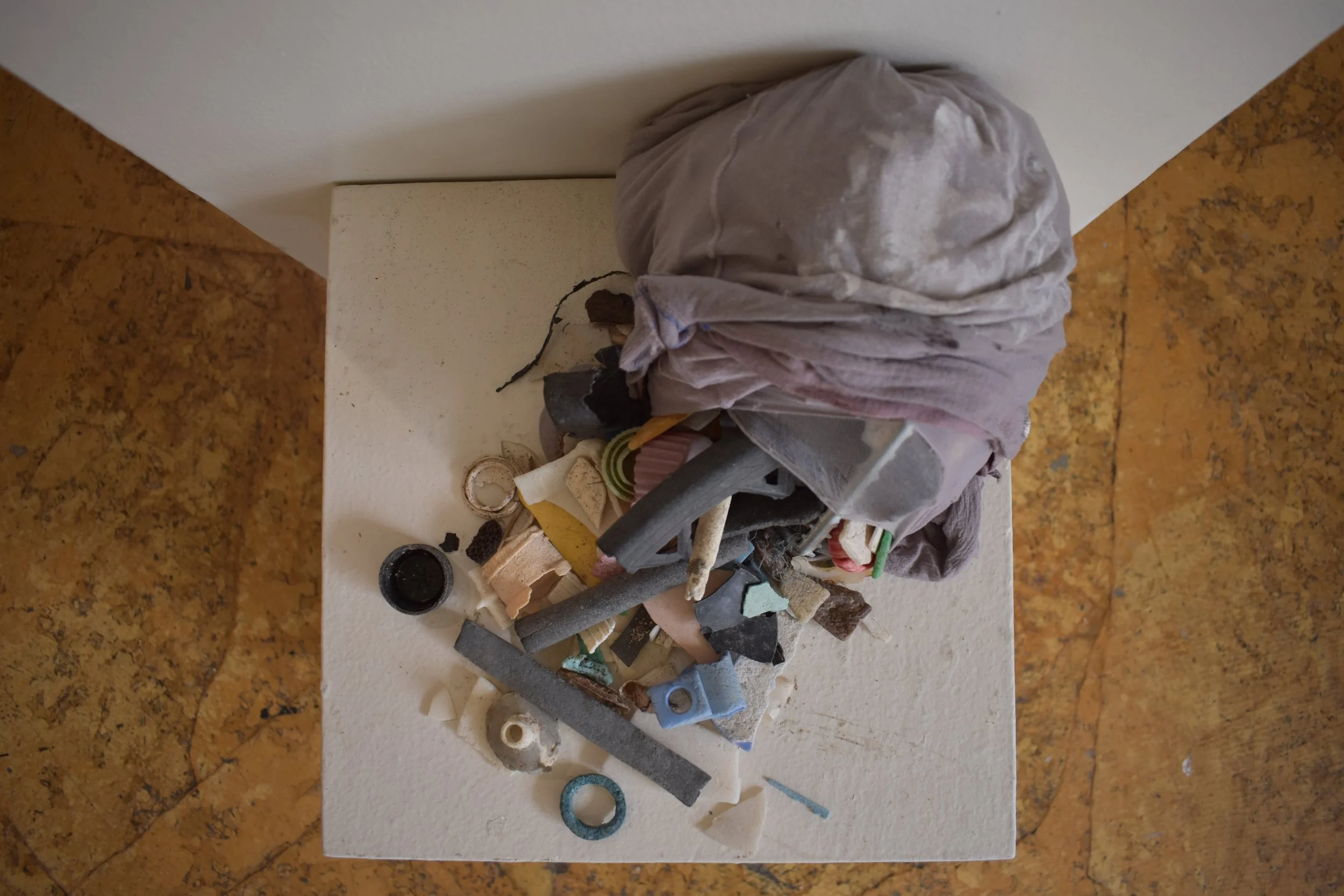Artist Statement and Process
The Sixth Great Extinction in scientific and historical terms is known as the Holocene or Anthropocene extinction. By definition, it is the ongoing extinction event during the present epoch, mainly due to human activity. In other words, this mass extinction is happening right now on our planet. It is estimated that the current rate of extinction of species is 100 to 1,000 times higher than natural rates.
The extinct animal sculptures central to the exhibition were created using microplastic pollution that Sustainable Coastlines Hawaii removed from beaches across the Hawaiian islands. Each sculpture specifically represents an animal that has gone extinct in the last decade due to human activity. The animal forms were created by stuffing the gathered microplastics into discarded nylon stockings. The grotesqueness of these “stuffed animals” reflects how plastics are overtaking both the habitat and the food sources of marine life. This work is haunted by the NOAA picture of an albatross carcass (below) who’s rotting interior reveals a creature that has become more plastic than organic body parts.
After building the animals, I took them out into the natural world, and photographed the unnerving juxtaposition of nature and plastic. I chose to use Polaroid film because each photograph is a one-off piece and cannot be reproduced. This exposes the finite aspect of life, the permanence of extinction, and the disposable mindset of a culture that creates so much indestructible waste.
Finally, to complete the visual expression of this concept, I created a series of mixed media 2D artworks incorporating charcoal, ink, pencil, printmaking and collaged photographs. The use of a limited palette emphasizes the bleakness of extinction. Additionally, the encaustic works incorporate beeswax and pure color pigment.
This body of work responds to the ongoing extinction that we all bear witness to. As animals and plants disappear they are replaced with millions of tons of plastic, barren bodies of water stewing in waste runoff, and lands intricately woven with chemicals. The sad and monstrous appearance of this art is a direct reflection of this sad and monstrous imbalance on our planet. This work is meant to instigate conversation and build awareness, so that through awareness, and then action, can we heal existing damage and halt further environmental devastation.
An example of the creation process for the animal sculptures: the animal body stuffing is made entirely of plastic pollution that washes up on Hawaii's beaches. They nylon stockings create "the skin." A literal representation of the plight of animals who's bodies are stuffed full of plastic.
Another real life image of a dead sea bird that likely died due to the overwhelming amount of plastic in its body. The parallel between the real life and the sculptures is tragically striking.



